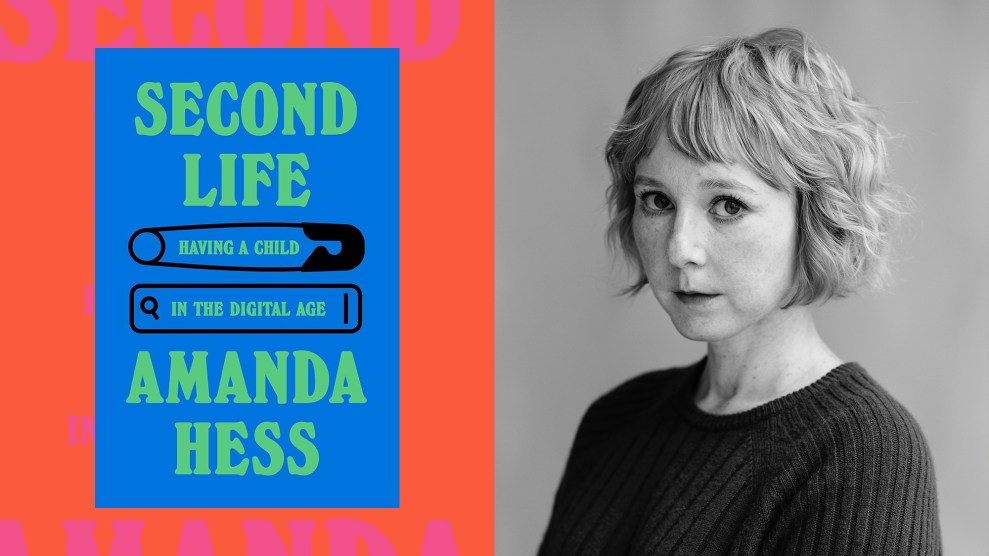Women & Guns
Women & Guns began in 1989 as a low-budget newsletter. Today it’s a glossy magazine with a circulation of 21,000 and a range of perspectives, from women who own firearms solely out of a concern for safety to those who relish target practice. The magazine is loaded with stories of converts to the cause — the homemaker who started hunting to be closer to her husband, the filmmaker who went from making an anti-gun documentary to being a regular at the shooting range. Women & Guns often reinforces sexist stereotypes (i.e., how to load a gun without messing up your nails) while at the same time touting gun ownership as a path to true feminism. (For subscription info, call (716) 885-6408.)
Women with guns and modems will find several Web sites targeting them. The Women’s Firearm Network site offers articles, first-person stories, info on events and training, and tips about new products. A frequent contributor to the WFN site, Janis Cortese describes herself as pro-choice, pro-gay, and pro-gun. Cortese operates her own homepage.
While Annie Oakley is probably the most famous female shooter ever, fictional tales of her exploits often obscure the real story of her life. In The Life and Legacy of Annie Oakley (Norman, Okla.: University of Oklahoma Press, 1994), historian Glenda Riley takes an academic approach to her subject, analyzing Oakley’s effect on the modern feminist movement and setting her up as a precursor to today’s female gun advocates. According to Riley, Oakley hoped that one day all women would be able to handle guns as naturally as they handle babies. With a more creative approach, the children’s book Shooting Star: Annie Oakley, the Legend (New York: Walker and Company, 1997) takes Oakley’s life to mythological levels. Even so, the facts about her are summarized at the end of the book, which is distinguished by Debbie Dadey’s charming, fanciful writing and Scott Goto’s stunning illustrations.
Future of Food
When Tom and Meredith Hughes first started to collect tater tidbits and potato paraphernalia more than a decade ago, little did they know their collection would spawn a Potato Museum, which in turn begat the Food Museum. In addition to curating traveling exhibits, the Albuquerque-based duo goes to local schools and lectures about the history of grains, veggies, and fruits. For a taste of their potato collection, check out their Web site, where you’ll find stats about spuds, samples of their more than 2,000 potato artifacts, and a collection of jokes. (Why didn’t the mother potato want her daughter to marry the famous newscaster? Because he was a commontater.)
 Culinary anthropologist Sidney W. Mintz examines how what we choose to eat has implications far beyond the Coke-Pepsi wars and the debate over oat bran in Tasting Food, Tasting Freedom: Excursions Into Eating, Culture, and the Past (Boston: Beacon Press, 1996). Mintz unravels the mysterious relationships between food and culture, exploring subjects like the connections between sugar and morality, how enslaved Africans manifested their hope for freedom in their evolving cuisine, and the search for a legitimate American culinary tradition.
Culinary anthropologist Sidney W. Mintz examines how what we choose to eat has implications far beyond the Coke-Pepsi wars and the debate over oat bran in Tasting Food, Tasting Freedom: Excursions Into Eating, Culture, and the Past (Boston: Beacon Press, 1996). Mintz unravels the mysterious relationships between food and culture, exploring subjects like the connections between sugar and morality, how enslaved Africans manifested their hope for freedom in their evolving cuisine, and the search for a legitimate American culinary tradition.
Irish Hunger: Personal Reflections on the Legacy of the Famine (Boulder, Colo.: Roberts Rinehart Publishers, 1997) brings together modern perspectives on a tragedy that has had profound effects on Irish culture and identity. One hundred fifty years after the so-called potato famine, editor Tom Hayden (yes, that Tom Hayden) has collected writings from contributors including poet Seamus Heaney, Irish President Mary Robinson, and actor Gabriel Byrne, along with newspaper accounts and diary entries from the 1840s, to shed light on the famine’s lasting personal and political dimensions.
Paul Hawken
The International Society for Ecological Economics has put out two of the best books on the subject of natural capital. Published in 1994, Investing in Natural Capital: The Ecological Economics Approach to Sustainability (Washington, D.C.: Island Press, 1996) is still the most comprehensive and thorough exploration of the concept in print today. It’s not bedtime reading — and some pieces are somewhat arcane. But there also are classic contributions from Rudolf S. de Groot, Howard T. Odum, and Herman E. Daly. Also from the ISEE, Getting Down to Earth: Practical Applications of Ecological Economics (Washington, D.C.: Island Press, 1996), while not always true to its title, provides a range of perspectives from an international cast of contributors, all of whom agree that a shift toward environmentally sustainable economics will require big changes — from inside the halls of large institutions to inside the heads of common folks.
Considered by most to be the dean of ecological economics, Herman E. Daly elegantly topples many shibboleths in Beyond Growth: The Economics of Sustainable Development (Boston: Beacon Press, 1996). Daly challenges the conventional notion that growth is always good, and he bucks environmentalist orthodoxy, arguing that the current focus on “sustainable development” is misguided and that the phrase itself has become meaningless.
Amory and Hunter Lovins are the husband-wife duo who pioneered one of the most delicious economic concepts since the idea of credit: the negawatt industry, based on the idea that you can make money by selling the absence of something (i.e., saved energy). Their Rocky Mountain Institute’s Web site offers position papers on everything from hypercars to green development, practical tips on making your home and life more efficient, and resources for finding environmentally responsible jobs.
“Save the Rainforest” may have become a tired cliché, but Canadian filmmakers Heather Frise and Velcrow Ripper inject a renewed urgency into the subject in Bones of the Forest (Transparent Film, S-43-C-11. Galiano Island, British Columbia, Canada VON 1PO), an innovative documentary about the destruction of Canadian forests. The film, which includes interviews with native Indian elders, retired loggers, corporate executives, and environmentalists, combines abstract images and time-lapse photography to convey both the essential character of the forest and what the real dangers are if we continue to decimate it.
In Everything for Sale: The Virtues and Limits of Markets (New York: Knopf, 1997), Robert Kuttner, editor of The American Prospect, painstakingly debunks the growing insistence that the market, if only freed from governmental interference, could bring back utopia. Kuttner does believe the market can be left to its own devices up to a certain point, and Everything for Sale attempts to locate that point and reclaim a middle ground. In a chapter on environmental regulation, Kuttner analyzes how initiatives to combat pollution and promote safer workplaces have produced mixed results.
For a decidedly un-cerebral perspective, try Paul Lukas’ Inconspicuous Consumption: An Obsessive Look at the Stuff We Take for Granted, From the Everyday to the Obscure (New York: Crown Trade Paperbacks, 1997). Offering a ’90s ironic-cum-nostalgic take on everything from the transparent office building mail chute (“Being able to see the envelope beginning its 39-floor descent highlights the letter’s mortality”) to Thirsty Cat! seltzer (“the Perrier…of the four-legged set”), Lukas serves up the cult of consumerism at both its worst and best. Culled from Lukas’ ‘zine, Beer Frame, and his popular columns for the New York Press and New York magazine, these short takes are as clever and well-crafted as many of the products themselves, but in the end they’re just as empty.
The Winnipeg-based International Institute for Sustainable Development does some of the best work in the field, and its Web site is no exception. This comprehensive, thoughtfully designed site offers something for everyone: Novices still trying to figure out what exactly sustainable development means can take a quick interactive crash course; experts will appreciate the Earth Negotiations Bulletin, which provides daily coverage of U.N. policy on the environment and development. With a wealth of documents, resource listings, and action alerts, this is the kind of organization we need everywhere. Surf it and weep.
















